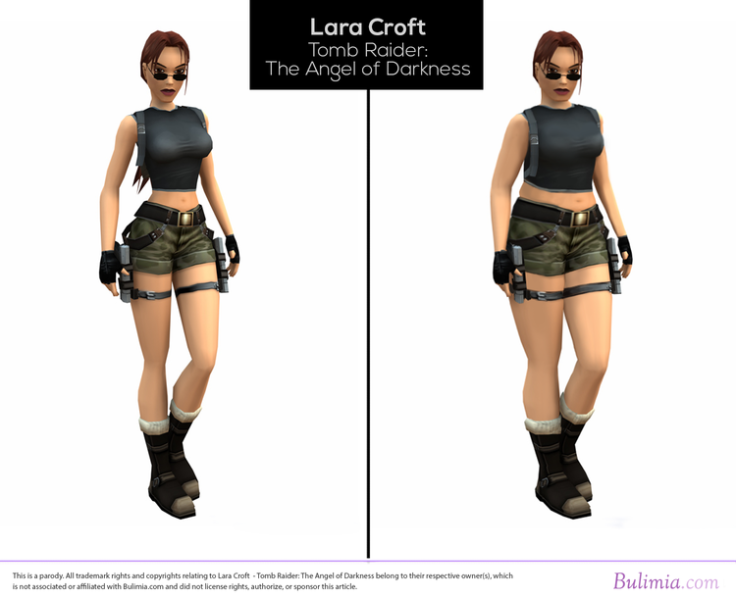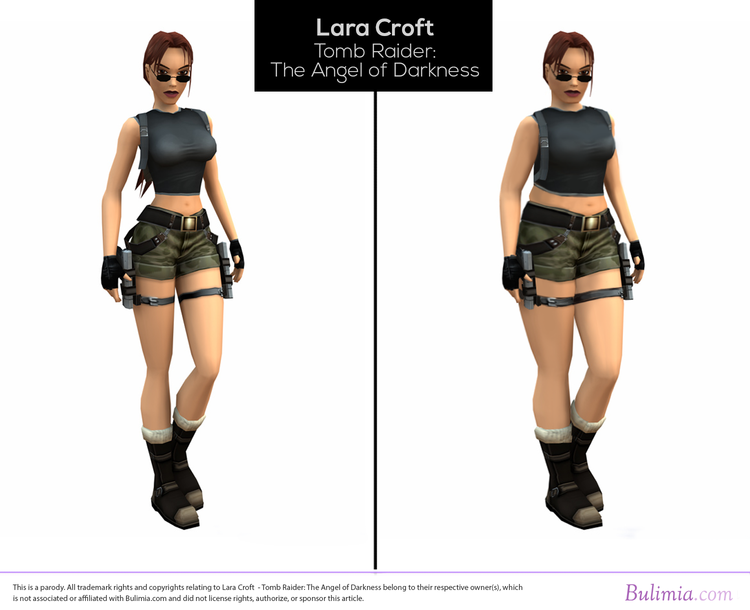Tomb Raider's Lara Croft, Other Female Video Game Characters Get Realistic Makeovers For Girl Gamers Struggling With Eating Disorders

Remember that time Toby Gard, the lead designer of the Tomb Raider: The Age of Darkness video game, claimed Lara Craft’s significantly enlarged breast size was done by accident? Well, Bulimia.com, an online resource for men and women struggling with eating disorders, has gone ahead and fixed it.
As the story goes, Gard’s colleagues ended up loving the accidental adjustment and left it as is. The thing is, on an already ultra-slim video game character, one could argue — and many have — the new Lara Croft simply reinforced unrealistic body ideals for women, especially young girls. So not only did Bulimia use Photoshop to reimagine a more realistic Croft, but they took on other unrealistic characters, too.
“These days, there’s rarely a media type that isn’t criticized for its body image depictions, and video games are no exception,” Bulimia explained. “Video games have grown increasingly realistic over time … and with that kind of attention to detail, it makes us wonder, why can’t they accurately portray the female body?”
Bulimia speculated the consequences of these interpretations could yield a negative body image, which isn't far-fetched considering existing data showing the negative influence some media has on women. They wrote, “girl gamers … could develop a skewed image of how the female body should look,” which might “mark the beginning of obsessive thoughts about their own bodies, and self-questioning as to why they don’t align their perceived ideal.”
While the National Eating Disorder Association said “there is no single cause of body dissatisfaction or disordered eating,” there’s a growing body of research that finds mass media is certainly a major contributor. NEDA cited 80 percent of Americans watch television today, and on a typical day, 8- to 18-year-olds are engaged with some form of media for nearly eight hours each day.
"The scope of impact goes way beyond the people playing the games," a Bulimia.com spokesperson told Motherboard. "Every doll-like character they design is harming cultural perception of the female body, and in turn the women they care about. In fact, a recent study by Rosalind Warren explains it's not even something male players want to see. There's no reason this can't change."
Click through to see which characters were made over to look like real women.

Published by Medicaldaily.com



























